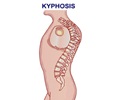Use of adjunct therapies is rising in popularity among patients with spinal cord injury, prompting calls for in-depth study of their safety and efficacy.

‘Public should be educated about the potential use of complementary and integrative healthcare interventions. Expanding the toolbox of interventions to address complications and maximize well-being would be a great benefit.’
Read More..




The article, “Utilization of complementary and integrative healthcare by people with spinal cord injury in the Spinal Cord Injury Model Systems: A descriptive study” was published in Archives of Physical Medicine and Rehabilitation.Read More..
Amanda Botticello, PhD, and Jeanne Zanca, PhD, of Kessler Foundation, co-authored the article with Jennifer Coker, PhD, MPH (lead author), Jeffrey Berliner, DO, and Susan Charlifue, PhD, of Craig Hospital; Thomas N. Bryce, MD, of Icahn School of Medicine at Mount Sinai; David Chen, MD, of Shirley Ryan AbilityLab; David Estrada, JD, and Ross Zafonte, DO, of Spaulding Rehabilitation Hospital; Kimberley R. Monden, PhD, of University of Minnesota Medical School; and Heather Taylor, PhD, of Texas Institute for Rehabilitation Research.
The use of complementary and integrative healthcare—which includes healthcare approaches typically seen as outside of conventional medical care or traditional Western medical practices—is on the rise. People with spinal cord injury, in particular, are using alternative therapies, often in an attempt to relieve pain.
Yet there is very little scientific evidence for the efficacy of most approaches, and even less evidence for their safety, specifically for people with spinal cord injury, whose concurrent treatments and functional limitations may present additional risks as compared to the general population.
This study is the first to systematically assess complementary and integrative healthcare in people with spinal cord injury. In an analysis of an online survey completed by 411 participants with spinal cord injury, the research team characterized how often and why people try using therapies that are not prescribed by their clinicians.
Advertisement
“This tells us that people with spinal cord injury are eager for information about and access to alternative therapies, and we need to be able to provide rehabilitation clinicians with up to date and accurate information about what’s safe and effective and what’s not.”
The most common reasons for current use were general health and wellness, pain, bladder management, and to improve mobility, flexibility, and strength, though a variety of other reasons were also reported, ranging from respiratory function to mental health. Among participants who reported not trying complementary and integrative healthcare approaches, the primary reason was not knowing what options were available.
“There are still important questions to address,” added Dr. Botticello at Kessler’s Northern New Jersey Spinal Cord System.
“Are people with spinal cord injury using complementary and integrative healthcare because it makes them healthier, meaning they experience fewer problems from secondary conditions? Or are people who experience more secondary health conditions using these approaches attempting to treat those conditions?”
She continued, “There is clearly a need and opportunity to educate people with spinal cord injury and their health care providers about the potential use of complementary and integrative healthcare interventions. Expanding the toolbox of interventions available to address complications and maximize well-being would be a great benefit.”
Funding sources: This work was supported by the National Institute on Disability, Independent Living, and Rehabilitation Research (NIDILRR): 90SI5015 (Craig Hospital), 90SI5026 (Kessler Foundation), 90SI5022 (Shirley Ryan AbilityLab), 90SI5021 (Spaulding Rehabilitation Hospital), and 90SI5027 (Texas Institute for Rehabilitation Research)
About the Spinal Cord Injury Model System: The Spinal Cord Injury Model Systems (SCIMS) are specialized programs of care in spinal cord injury that gather information and conduct research with the goal of improving long-term functional, vocational, cognitive, and quality-of-life outcomes for individuals with spinal cord injury.
Each grantee contributes patient records to a national database, maintained by the National SCI Statistical Center, which tracks the long-term consequences of SCI and conducts research in the areas of medical rehabilitation, health and wellness, technology, service delivery, short- and long-term interventions, and systems research.
Each SCI Model System is charged with disseminating information and research findings to patients, family members, health care providers, educators, policymakers, and the general public.
Source-Eurekalert











